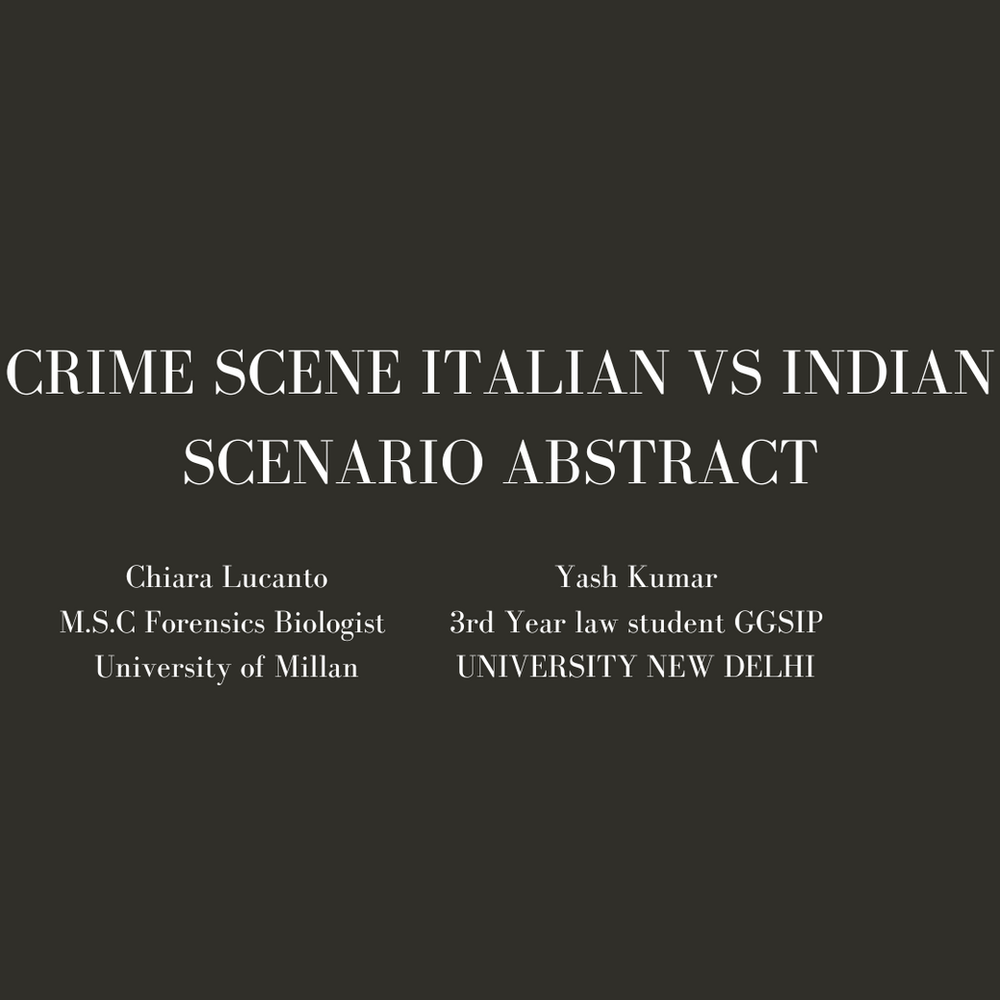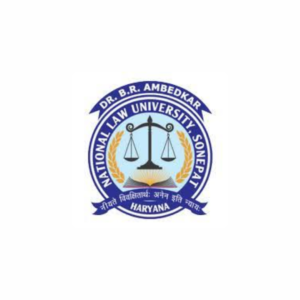1. INTRODUCTION
2. MATERIALS AND METHODS
-
2.1 WORK TOOL ON CRIME SCENE IN ITALY VS INDIA
-
2.2 PHASES OF FORENSIC BIOLOGICAL EXAMINATION (SURVEY)
3. DISCUSSION (AND RESULTS) CRIME SCENE INDIAN LAWS CRIME SCENE ITALIAN LAWS (ARTICLE 360 / 359 PROCEDURE CODE)
4. CONCLUSIONS
5. BIBLIOGRAPHY
-
Curtotti Nappi, D., & Saravo, L. (2011). The Crime Scene Investigation in Italy.
-
Studia Iuridica Auctoritate Universitatis Pecs Publicata, 148, 19.
-
Guidelines for collection, storage and transportation of Crime Scene Biological samples-http://dfs.nic.in/pdfs/IO%20-Forensic%20evidence-Guidelines%20for%20%20IO.pdf Lee, H. C., & Ladd, C. (2001). Preservation and collection of biological evidence.
-
Croatian medical journal, 42(3), 225–228. https://www.ncbi.nlm.nih.gov/pmc/articles/PMC4581010/
1. INTRODUCTION CRIME SCENE INSPECTION IN GENERAL
-
The goal of crime scene investigation is to identify, document and collect physical and biological evidences at the scene of crime. It must be done with an important attention and a thoughtful approach. Forensic Science is defined as “The application of science to those criminal and civil laws that are enforced by the police agencies in a criminal justice system”. In ancient India, the idea of forensic science is not a new one as medical belief was regularly applicable to the requirements of the law. In the Italian Court, the standard for collecting DNA evidence is determined by the credibility of the DNA expert's testimony. According to ICCP Article 220, the expert is nominated by the judge.
2.1 WORK TOOL ON CRIME SCENE IN ITALY VS INDIA
-
Before beginning the specialized survey, a quantitative and qualitative check of the instrumentation in the briefcase is made. Following are the major components of crime scene investigation tools used for biological evidences:
2.2 PHASES OF FORENSIC BIOLOGICAL EXAMINATION (SURVEY)
-
The phases of Forensic Biological Examination are: inspection and documentation, sampling, detection and collection. Documentation of the biological evidence is essential for the success of any case analysis and the subsequent reconstruction of the case. Each biological evidence must have a unique identification number and its location at the crime scene/victim’s body must be properly photo-documented with relevant metric references. It is mandatory for all forensic operators to wear DPI such as mask and latex gloves, to be changed each time different traces are sampled. It is defined as 'Sampling', the first inspection of a given finding and or victim’s body (if we are talking about medico-legal implications). It is carried out with the naked eye using an analysis methodology from general macroscopic to detailed observation of the particular. In some cases, during this procedure it is possible to notice so-called ‘Clear Traces’, a macroscopic potentially biological evidence of forensic interest. Furthermore, the findings are examined with the aid of special light sources, enabling the so-called ‘Latent Traces’ to be highlighted.
-
The ability to introduce DNA findings in Court is also greatly impacted by evidence collection and preservation methods. Evidence integrity, both scientific and legal, begins with the first investigator at the crime scene. Swabbing is defined as the collection of biological material through swabs. The device used must be DNA free, sterile, closed and with a safety seal present. Any alterations to the swab lead to contamination of a presumptive biological trace, thus making the swab unavailable for use and the inadmissibility of the finding. The operator proceeds to open the swab, breaking the security seal present, extracting the apical part of the head to proceed to the collection of the biological trace. Fresh or humid biological traces do not require previous wetting and the collection is carried out directly by placing the head of the swab in contact with the trace. At the end, proceed with the closing of the swab. Each action of the operator must be photo-documented. Another method for collecting biological traces consists, where possible, in the complete acquisition of the substrate/object on which the likely biological trace of interest is located. In general, a significant quantity of material should be collected to ensure the recovery of sufficient DNA for testing purposes. Once the samples have been collected, they should be promptly delivered to the forensic laboratory.
-
Throughout the world, DNA evidence has provided the critical linkages leading to numerous convictions. DNA’s power as an exclusionary tool is equally noteworthy. However, DNA evidence that is not properly recognized, documented, collected, and preserved may ultimately be of no value to a criminal investigation.
WRITTEN BY :

Chiara Lucanto
M.S.C Forensics Biologist
University of Millan
Yash Kumar
3rd Year law student GGSIP UNIVERSITY NEW DELHI





